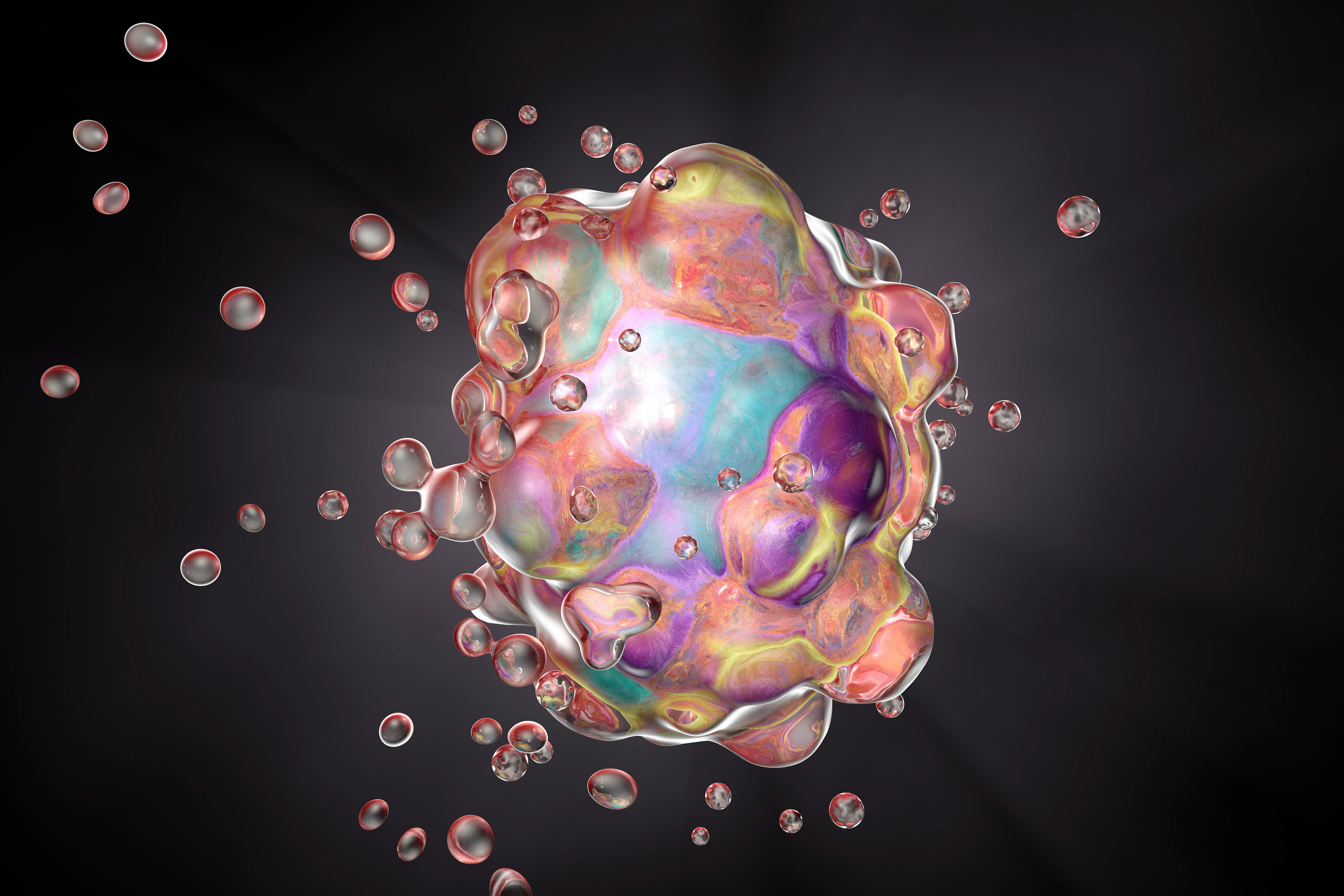Scientists Calculate the Speed of Death in Cells, and It's Surprisingly Slow

Cells in our bodies die all the time, and now we know just how fast.
Scientists found that death travels in unremitting waves through a cell, moving at a rate of 30 micrometers (one-thousandth of an inch) every minute, they report in a new study published Aug. 10 in the journal Science. That means, for instance, that a nerve cell, whose body can reach a size of 100 micrometers, could take as long as 3 minutes and 20 seconds to die.
That may sound morbid, but it's precisely this lethal tide that keeps us alive and healthy. Apoptosis — or programmed cell death — is necessary for clearing our bodies of unnecessary or harmful cells, such as those that are infected by viruses. It also helps shape organs and other features in a developing fetus. (There is a second way cells can die, called necrosis, which is a different process that occurs as an unplanned response to a stressful event).
If this process doesn't work properly, the consequences can be dire. For example, cancerous cells, happily living on, having slipped the grasp of the Grim Reaper, begin to spread instead of dying off. [5 Ways Your Cells Deal With Stress]
"Sometimes our cells die when we really don't want them to — say, in neurodegenerative diseases. And sometimes our cells don't die when we really do want them to — say, in cancer," senior author Dr. James Ferrell, a professor of chemical and systems biology and biochemistry at Stanford University, said in a statement. "And if we want to intervene, we need to understand how apoptosis is regulated."
Apoptosis is also sometimes called "cellular suicide," because it is a process of self-destruction. It begins with a signal either from the inside or the outside that informs enzymes within the cells called caspases to start cleaving the cell. But it had been unclear how apoptosis, after being triggered, actually spread through the cell.
To figure this out, Ferrell and his team observed the process in one of the larger cells present in nature: egg cells of Xenopus laevis, or African clawed frogs. They filled test tubes with fluid from the eggs and triggered apoptosis, which they watched unfold by tagging involved proteins with fluorescent light. If they saw fluorescent light, it meant apoptosis was taking place.
Sign up for the Live Science daily newsletter now
Get the world’s most fascinating discoveries delivered straight to your inbox.
They found that the fluorescent light traveled through the test tubes at a constant speed. If apoptosis had carried on due to simple diffusion (the spreading of substances from an area of high concentration to one of low concentration), the process would have slowed down toward the end, according to the study.
Since it didn't, the researchers concluded that the process they observed must be "trigger waves," which they likened to "the spread of a fire through a field." The caspases that are first activated, activate other molecules of caspases, which activate yet others, until the entire cell is destroyed.
"It spreads in this fashion and never slows down, never peters out," Ferrell said in the statement. "It doesn't get any lower in amplitude because every step of the way it's generating its own impetus by converting more inactive molecules to active molecules, until apoptosis has spread to every nook and cranny of the cell."
The team then wanted to watch this process occur inside the egg itself, as it would in nature. They noticed that when frog eggs died, they darkened in color. So, they initiated conditions that would naturally lead to the death of a frog egg and imaged what happened. Similarly, the cell darkened at the average rate of 30 micrometers per minute.
Such trigger waves are actually pervasive in nature, Ferrell said. Trigger waves also help cells reproduce, neurons propagate signals through the brain and viruses spread from cell to cell. Ferrell and his team hope to find out where else in biology trigger waves occur.
Originally published on Live Science.

Yasemin is a staff writer at Live Science, covering health, neuroscience and biology. Her work has appeared in Scientific American, Science and the San Jose Mercury News. She has a bachelor's degree in biomedical engineering from the University of Connecticut and a graduate certificate in science communication from the University of California, Santa Cruz.










